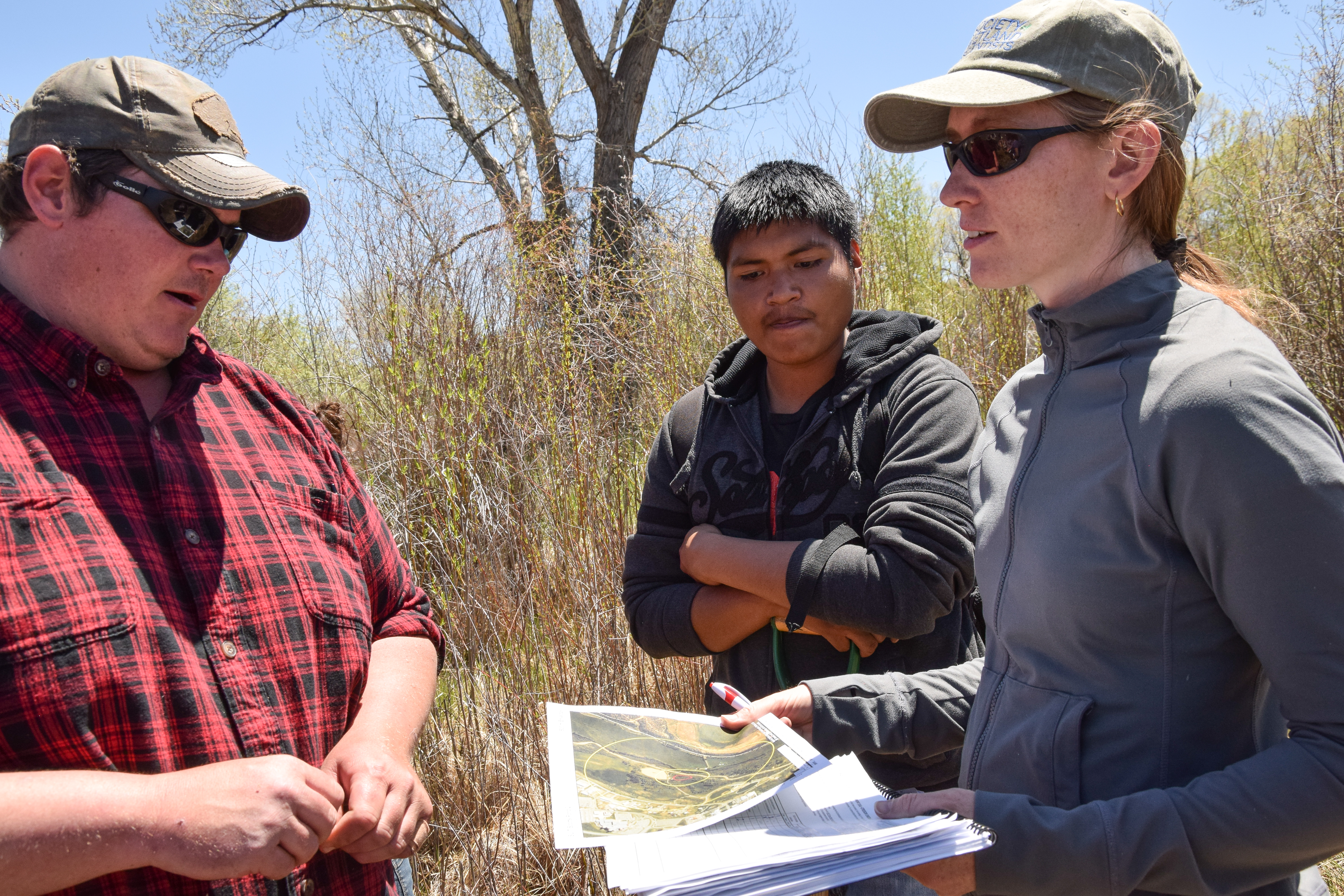EPD gets assessment training




The Colorado National Heritage Program and Army Corps of Engineers paid a visit to the Southern Ute Indian Tribe on Thursday, March 12 – providing training to associates from the Environmental Protection Department in regards to identifying proper wetlands across the Southern Ute Indian Tribe.
Kara Hellidge (Us Army Corps of Engineers) and Joanna Lemly (Colorado National Heritage Program) met with the Fish & Wildlife Department, Lands and Range Division, Water Quality Program, La Plata County, and Colorado Department of Transportation outside Scott’s Pond where they tested plant life and soil colors – which determines the quality of a wetland.
The Southern Ute Indian Tribe is currently developing a protection plan that will safeguard wetlands across the reservation by providing assessments with proposed activities. These activities include wetland assessment, wetland prioritization, and mapping. These will rank the proposed wetlands in line of cultural use, ecological use, and wildlife use.
“The understanding of soil types and how they’re used to determine a wetland was probably the most least understanding subject for us, because some us know about plants already, but some of us don’t know about the [varieties] of soils,” said Curtis Hartenstine, Water Quality Program Manager. “We’ve determined that a gray color in the soil is a big indicator that determines a wetland.”
There are three assessments that define the quality of a wetland – plant life, soils, and hydrology (presence of water). If an investigated area matches two thirds of the assessments, then the wetland is considered to be in good quality. Wetlands are found using a GIS (geographic information system) that takes aerial photos of possible areas. The investigation continues with fieldwork to determine if the wetland is official.
Hartenstine expressed gratitude to Kara Hellidge and Joanna Lemly for taking the time to visit the reservation and provide the assessment training. Respectively, the Army Corps of Engineers and Colorado National Heritage Program play a major role in defining wetlands as well as determining the healthiness of them.
“Normally we go off the reservations for training, so we brought these two programs to us we can understand tribal wetlands in focus,” Hartenstine commented. “We thought it was specifically important to bring them here and work on tribal lands with us.”




